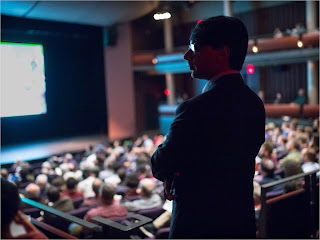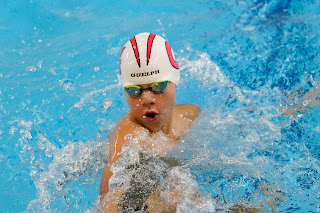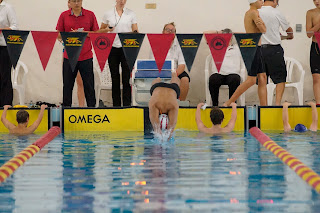in an interview with Sheila Turner-Seed, 1971
Ideas, Comments, Exaggerations & Delusions, Inspirations, and Secrets. Shoot what it feels like, not what it looks like. Seeing my world through Sony gear, finding Heaven everywhere. Check out my website/links below.
Friday, November 25, 2016
Thursday, November 24, 2016
Sony Diaries #988: missing my bus stop
It was a damp and foggy night on the commute home and the bus was so nice and cozy I fell asleep and missed my bus stop. I got off on the next stop and what would have been a 10 minute walk home turned into 30 minutes.
And so I imagined myself to be Henri Cartier-Bresson, with a Sony RX10 instead of a Leica M3.
Here is what I saw on the walk home:
3 runners and 3 border collies
shower heads for light
parking lights
warm bus. November 24th.
Tuesday, November 22, 2016
Sunday, November 20, 2016
Sony Diaries #985: on a walkabout on a cold Sunday morning
Walking (or biking) is the way to go to see and feel the view. After an early morning taking head shots of the members of the Guelph Marlins Aquatic Club, and not having the use of a car that morning, I walked home. These are some of what i saw.
November 20th.
Friday, November 18, 2016
Sony Diaries #984: it still comes down to great service with a genuine smile
photo courtesy of bostonimages.com
For the last nine years, and counting, from the demise of film to the advent of digital, from 6MP Pro cameras to today's current 24-36MP, I have been working with Chris and Shelley at Boston Images. In a business where you're only as good as your last job, in an industry where the price of entry is as low as the price of a consumer-grade camera at Best Buy, in a world where referrals rule and fancy websites, not as much, I'm still shooting. I work alongside shooters young enough to be my twenty-something kids. What's the formula for longevity?
I think it's the same formula used by any other long lived enterprise. Great Service. Beyond a basic level of technical and artistic competence commensurate with your pricing structure, what wedding clients will remember is the atmosphere of the day (or the absence of anxiety and concern for the photographers' conduct), the agreeable "flow of events" initiated by the photographers' instructions, and the photographers' people-management skills (some clients need bossing around, others not so much). This is for the day of the wedding.
There's is also the front-end consult and back-end post-shoot relationship, which I'm not qualified to comment on as much. Suffice it to say that they're just as crucial; these 3 aspects are closely interrelated.
Wedding clients won't remember (or care to know) how much your gear costs, or what f-stop was used for the portrait session. They'll remember the feeling, of how they enjoyed themselves that day. This is what leads to referrals. And longevity in this business.
I think it's the same formula used by any other long lived enterprise. Great Service. Beyond a basic level of technical and artistic competence commensurate with your pricing structure, what wedding clients will remember is the atmosphere of the day (or the absence of anxiety and concern for the photographers' conduct), the agreeable "flow of events" initiated by the photographers' instructions, and the photographers' people-management skills (some clients need bossing around, others not so much). This is for the day of the wedding.
There's is also the front-end consult and back-end post-shoot relationship, which I'm not qualified to comment on as much. Suffice it to say that they're just as crucial; these 3 aspects are closely interrelated.
Wedding clients won't remember (or care to know) how much your gear costs, or what f-stop was used for the portrait session. They'll remember the feeling, of how they enjoyed themselves that day. This is what leads to referrals. And longevity in this business.
Thursday, November 17, 2016
Sony Diaries #983: a renowned mathematician, and the Sigma 35F1.4ART
It was a distinct honour and a pleasure to cover the 2016 Symposium at the Fields Institute, esp since the guest of honour was Manjul Bhargava, Canadian-American mathematician, awarded the Fields Medal (known as the Nobel Prize for Mathematics) in 2014. Manjul, who combines sky-high intelligence with a beautiful personality, can mesmerize an audience of mathematicians and lay people (like myself) with the same material: quite a feat!
As he was being introduced for his talk, Manjul was in the back of the theatre, in the upper stands where he seemed to glow with an electric energy, in the dark. Wanting to capture this image in my head, I knew I had to shoot wide-open, slow shutter speed (1/30, Sony SteadyShot helped avoid camera shake), high ISO (6400). I chose the Sigma 35 F1.4 ART, one of 2 lenses I own that is sharp wide-open. He was looking straight ahead, slowly shifting from left to right, wanting to avoid being in front of me, thinking that he was in the way of my shooting. I kept the camera pointed at him, hoping that he would turn to his left side for a profile. For a split second, he did! and the light reflected off of his glasses was perfect, punctuating what would have been a profile all in shadow. I only took 1 shot.
More photos of Manjul in "sufficient " light:
University of Toronto, November 2016
Sunday, November 6, 2016
previsualizing an image + good timing
Last night while shooting a wedding at Hart House, University of Toronto, on my way to the car (to grab my monopod), I came across the War Memorial lit up with a melancholy glow. I raised my cell phone (LG G5), set to 16x9 to capture the scene. It had been set to sepia for a previous photo and just as I was about to change it back to normal colour, a group of students walk across my field of view in silhoutte. Something clicked subliminally and what happens oftentimes is that a fully developed image develops in the brain so quickly there isn't time to process it for articulation. One just has to go with the flow and go with the image, not exactly knowing how it will turn out. The image was that of weary soldiers with knapsacks, bowed down with the rigours of war, the sepia hinting of the past. The good timing involved some luck in that since a cellphone is not as responsive as a regular camera, I just had to hope that the the front person would be exactly dead centre when I clicked the shutter.
For more on this War Memorial check it out here.
Meanwhile, back at the wedding earlier, a harpist was entertaining the crowd.
For more on this War Memorial check it out here.
Meanwhile, back at the wedding earlier, a harpist was entertaining the crowd.
Sony Diaries #980: the Oak Tree on Hart's Farm
The majestic oak on Hart's arm, 12.5 hectares soon to be developed into 279 units of homes, townhomes, apartments, and commercial/office space. Great news for Guelph but I hope they don't cut down this oak. An oak icon is on the development's promotional material so this could be good news for this tree.
Thursday, October 27, 2016
Sony Diaries #979: Shooting a Swim Meet: First Impressions
Obtaining reasonably good swim photos require two basic things: Access to the deck and freedom to move around, and an expensive camera.
Access and freedom of movement is important because as I will show, different events/strokes require different positioning. With movement, you will require non-slip shoes (water is an occupational hazard, and falling down is made worse if you break your fall with your camera, worse if you hurt someone else) and pants/shirts that you don't mind getting wet.
An expensive camera is crucial because only the pro cameras offer the settings required:1/2000 sec to freeze water drops in mid-air, F4, ISO8000. My Sony a99 is a pro (read: expensive) camera with 5fps and a buffer of 12 jpgs at a time but it was barely able to keep up. I had to anticipate the peak of the action instead of just letting go a burst of 30 frames and hope one will capture the peak. On the positive side, a slow camera trains you to be disciplined with your shot selection. Any camera (and lens) needs to be weather-sealed against the chlorine-tinged environment.
The one lens that worked for the size of the venue (25m Short Course) is a 70-200F2.8 lens. Notice the narrow walkways on either side of the pool.
As for equipment considerations, a two-day Swim Event, shooting a total of 2x 5-hour days could easily yield 6K images (my keeper ratio is 1-in-4), and this is with shooting judiciously. That's a lot of shutter actuations on shutters that are rated for, in my case, 200K (the Sony a99 retails for $2500). Consumer cameras may be rated for 60K. Consumer cameras, and even higher rated (and more expensive) enthusiust cameras are not very good at handling high ISO's (ISO8000 was used for this shoot). Frame rates per second would be lower too.
In other words, shooting is like putting on mileage on a car, a car that won't last for too long.
Swimming is unique in that only the face is visible most of the time. Unlike "dry" sports where the whole body is available. This severely limits the athletic expression that is available to be photograph. There are 4 swim strokes (Breast, Free, Fly, Back), each with their own set of challenges, dependent on the age group, and the distance. In general, younger swimmers have less-developed forms and their heads are submerged more often than not. On the other hand, I imagine their parents would be the most enthusiastic to purchase photos.
Breast stroke is best shot with the swimmer coming towards the camera. On the shortest distance (50m), there is only one chance to take the photos: the first 25m. More developed swimmers may streamline up to 15m of the 25m pool length which means you have 10m worth of shooting time. Less-developed swimmers afford more shooting time. One advantage of shooting the swimmers head on (also applies in the Fly), is that moving sideways to the next lanes provides more opportunities to capture more swimmers.
Freestyle is best shot from the sides, with two chances in the 50m, out and back. Some of the more dramatic shots are in the Freestyle. In the Free, the first three lanes closest to the shooter are prime subjects.
The Fly is treated the same way as the Breast, shot head on. Watch for water splashing!
The Backstroke is difficult to shoot; ideally, it should be shot from the ceiling! In which case, the two lanse closest to the shooter shows the best. This is where the short end of the lens (70mm) is used.
Other points-of-views are sideways on the Breast,
The turn on the Breast and the Fly,
And of course, on the dives.
Finally, also available are the shots of swimmers out of the water, socializing, cheering on teammates, warming up, or deep in concentration for their event.
Subscribe to:
Posts (Atom)
POPULAR POSTS
-
Well, it's not really. The signage is changed on a regular basis by the owner of this establishment who fixes washers and dryers. T...
-
Kamal and Lamis' wedding on June 30th, in London, ON. This is the first wedding in years that I have attended as a guest. Througho...
-
a65 (a77 would be too big for this setup), HVLF43AM Flash (the 58AM would be too big for this setup), ThinkTank's CB Junior bracke...
-
I came across this blog by a collection of inveterate aficionados of broken umbrellas. They also welcome submissions from the umbrellarazzi...
-
It's been an intense relationship and it will soon be over. It's not the Oly, (here's goes the proverbial...) it's me. A mon...
-
http://bostonreview.net/BR36.3/junot_diaz_apocalypse_haiti_earthquake.php Pulitzer Prize winner Junot Diaz, in the May-June 2011 Boston Revi...
-
by Mary, of non-Filipina heritage, using a cookbook recipe for adobo . March 23rd. Recipe by www.pepper.ph . In addition to the recipe,...
-
There has never been a free lunch with high ISO's. Using high ISOs (ISO1600 and higher) meant putting up with noise/grain, colour shift...







































































